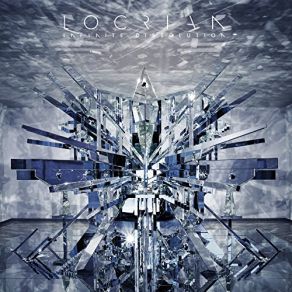Infinite Dissolution
Download links and information about Infinite Dissolution by Locrian. This album was released in 2015 and it belongs to Electronica, Jazz, Rock, Black Metal, Hard Rock, Indie Rock, Progressive Rock, Metal, Death Metal, Alternative genres. It contains 9 tracks with total duration of 7:51 minutes.

|
|
|---|---|
| Artist: | Locrian |
| Release date: | 2015 |
| Genre: | Electronica, Jazz, Rock, Black Metal, Hard Rock, Indie Rock, Progressive Rock, Metal, Death Metal, Alternative |
| Tracks: | 9 |
| Duration: | 7:51 |
| Buy it NOW at: | |
| Buy on Amazon $8.91 | |
| Buy on iTunes $9.99 | |
| Buy on Songswave €1.33 | |
Tracks
[Edit]| No. | Title | Length |
|---|---|---|
| 1. | Arc of Extinction | |
| 2. | Dark Shales | |
| 3. | KXL I | |
| 4. | The Future of Death | |
| 5. | An Index of Air | 7:51 |
| 6. | KXL II | |
| 7. | The Great Dying | |
| 8. | Heavy Water | |
| 9. | KXL III |
Details
[Edit]Over ten years, Locrian have released a startling number of recordings. From their beginnings as an experimental industrial noise/drone duo (multi-instrumentalist André Foisy and vocalist/multi-instrumentalist Terrence Hannum) to evolving into a trio with drummer Stephen Hess, their sonic palette has widened to include doom and black metal, post-rock and dark ambience. For a band thematically devoted to exploring decay, their sound has been, no matter how abstract, consistently expansive. Nowhere is this more evident than on Infinite Dissolution, an album conceptually based on the end of humanity, inspired by journalist Elizabeth Kolbert's Pulitzer Prize-winning book The Sixth Extinction: An Unnatural History. Again working with producer Greg Norman, the trio employ all of its familiar tenets (even more so than on 2013's Return to Annihilation) yet recombines them with different emphases, resulting in a recording of extraordinary depth, massive heaviness, arresting beauty, and even (relative) accessibility. "Arc of Extinction" opens like a hymn, with droning guitar chords, thudding kick drums, throaty, wordless, choral-esque vocals, and a distorted church organ. Gradually increasing in tempo, the track eventually gives way to Hannum's shrieking, thundering blastbeats, and tremolo picking with intense minimalist keyboards (à la Steve Reich). Later, first single "An Index of Air" is marshalled in by tom-toms, angry synth squeal, and blasted guitar drones over wordless, near-chanted vocals. After a startling, almost anthemic crescendo, shrieking vocals, knotty black metal guitars, and frenetic drums claim the center; they give way to low-end keyboard pulses, clean singing, and melodic guitar riffs. "KXL II," the second of three interspersed instrumentals, features field recordings of birds singing juxtaposed against harsh scraping sounds, a wafting cello, and an echoey, hypnotic snare. The single-note church organ/guitar chords that commence "The Great Dying" are appended by guest Erica Burgner-Hannum's haunted vocals hovering in the backdrop with percussive sounds and creating a dirge-like effect. A modal piano enters from the margin before waves of squalling guitars and drums transform it into a blackened march toward the abyss. "Heavy Water" is initially shaped by a pulsing keyboard, whispered voices, and spectral guitar notes. "KXL III" closes with icy toy pianos treated with reverb and hesitant, almost animalistic vocals in a fragmented skeletal hymn to the unknown. Locrian never lose momentum on Infinite Dissolution. Ultimately, it amounts to a soundtrack for a species that's trapped in a frantic, futile attempt to escape its own fate, for the momentary stasis in evolutionary time after it ceases to exist, and for nature's own rebirth from its absence. This music is inviting; it simultaneously engages even as it confronts. It may sound like another step away from metal, but that was always only one part of Locrian's aesthetic. It is their most holistic, inventive recording to date and ups the ante for anyone trying to follow them.